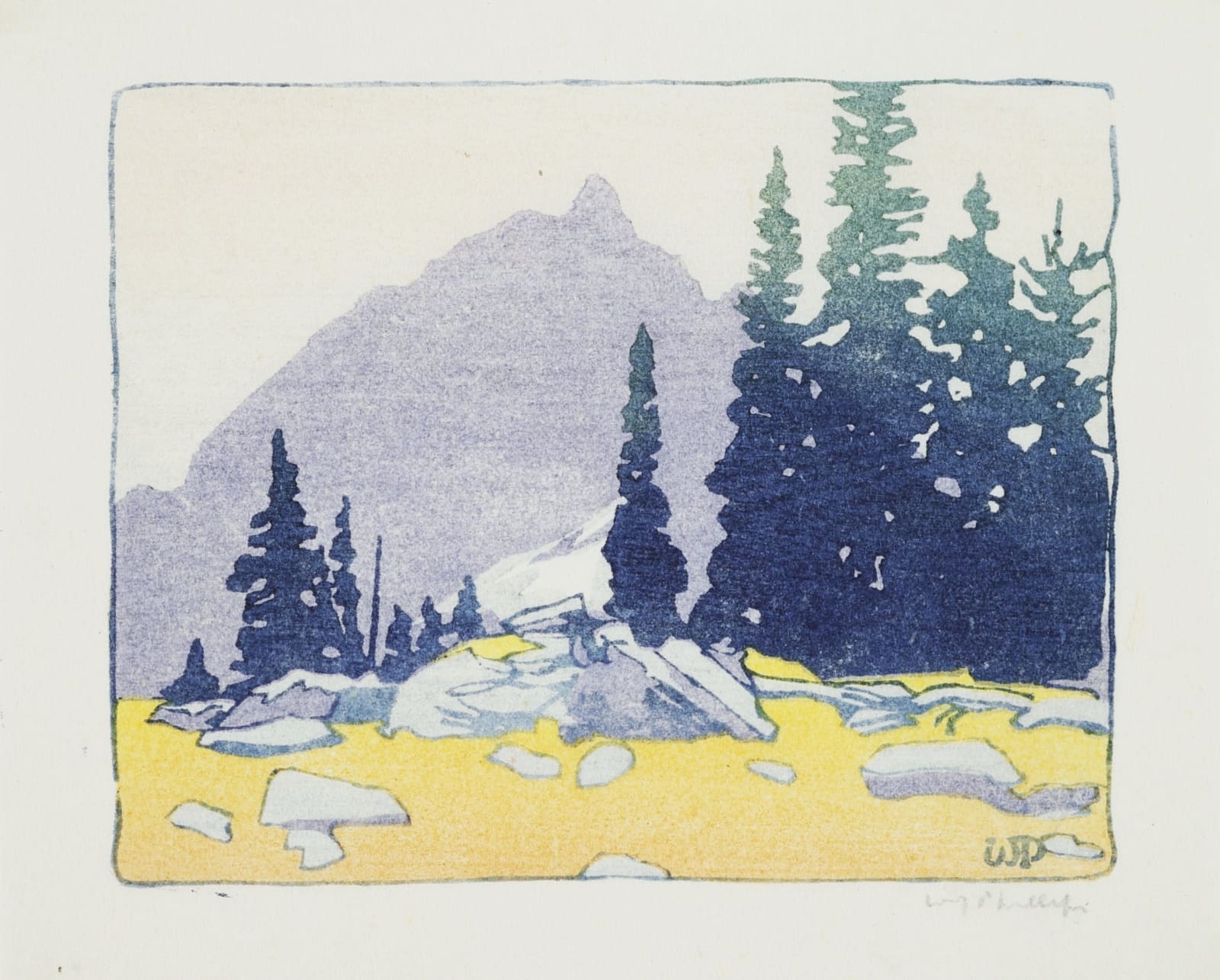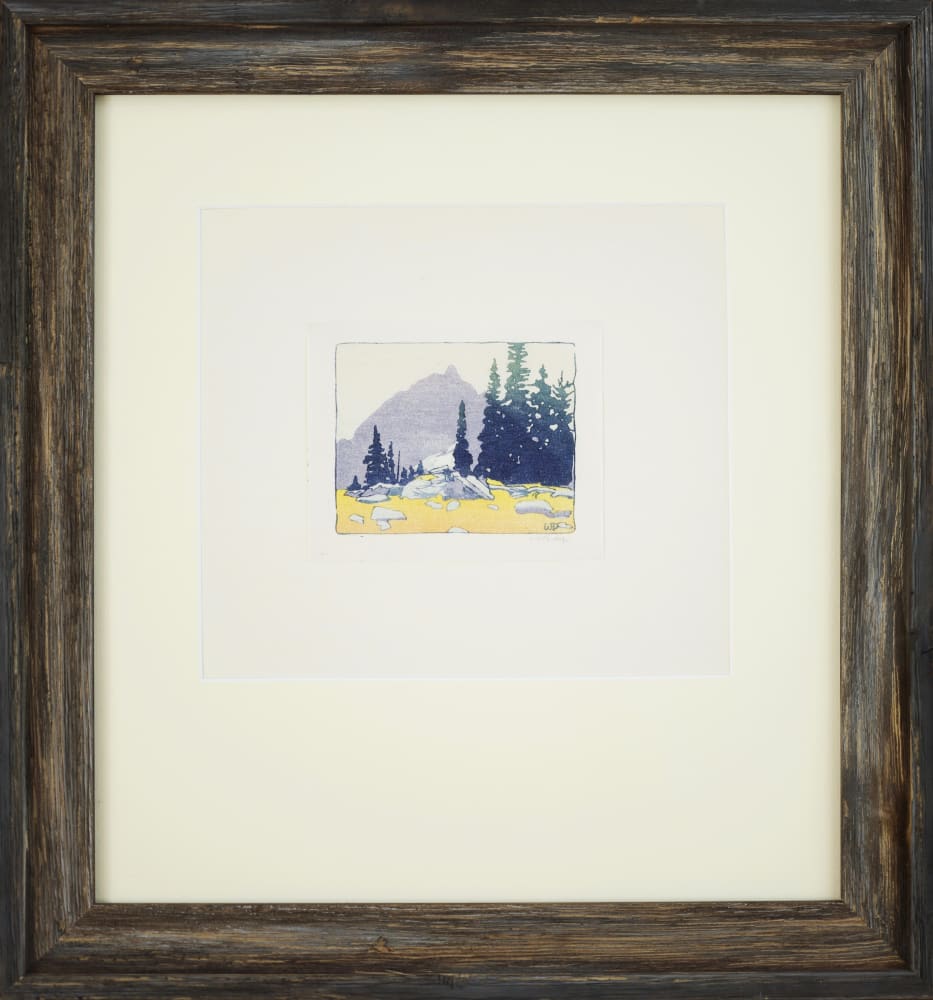Walter Joseph Phillips English Canadian, 1884-1963
protected by museum glass
Further images
In Alpine Meadow (1926), Walter J. Phillips employs his signature colour woodcut technique to depict a high-altitude scene of natural stillness and clarity. In the foreground, scattered grey rocks lie across a field of warm golden-yellow, suggesting late-summer alpine grass. Behind them, a group of deep blue-green conifer trees rises sharply, partially obscuring a large lavender-toned mountain that looms softly in the background. The composition has simplified forms and a limited palette that creates a sense of harmony with nature. Phillips, known for blending Japanese printmaking aesthetics with Canadian landscape subjects, achieves a strong sense of atmosphere with minimal detail, capturing both the grandeur and quietude of the Rockies.
Given that Alpine Meadow was created in 1926, it almost certainly reflects Walter J. Phillips’ experiences during his early trips to the Canadian Rockies, particularly in Yoho National Park and around Lake O’Hara. Phillips first visited the region in the 1920s and was deeply inspired by its dramatic alpine scenery, towering peaks, open meadows, and distinctive evergreens, all of which appear in this piece. The use of a pale violet for the distant peak in this woodcut may allude to Mount Odaray or Cathedral Mountain, both of which are featured in other works from this period.
This piece measures 3.25 x 4.125 in and protected by museum glass.






